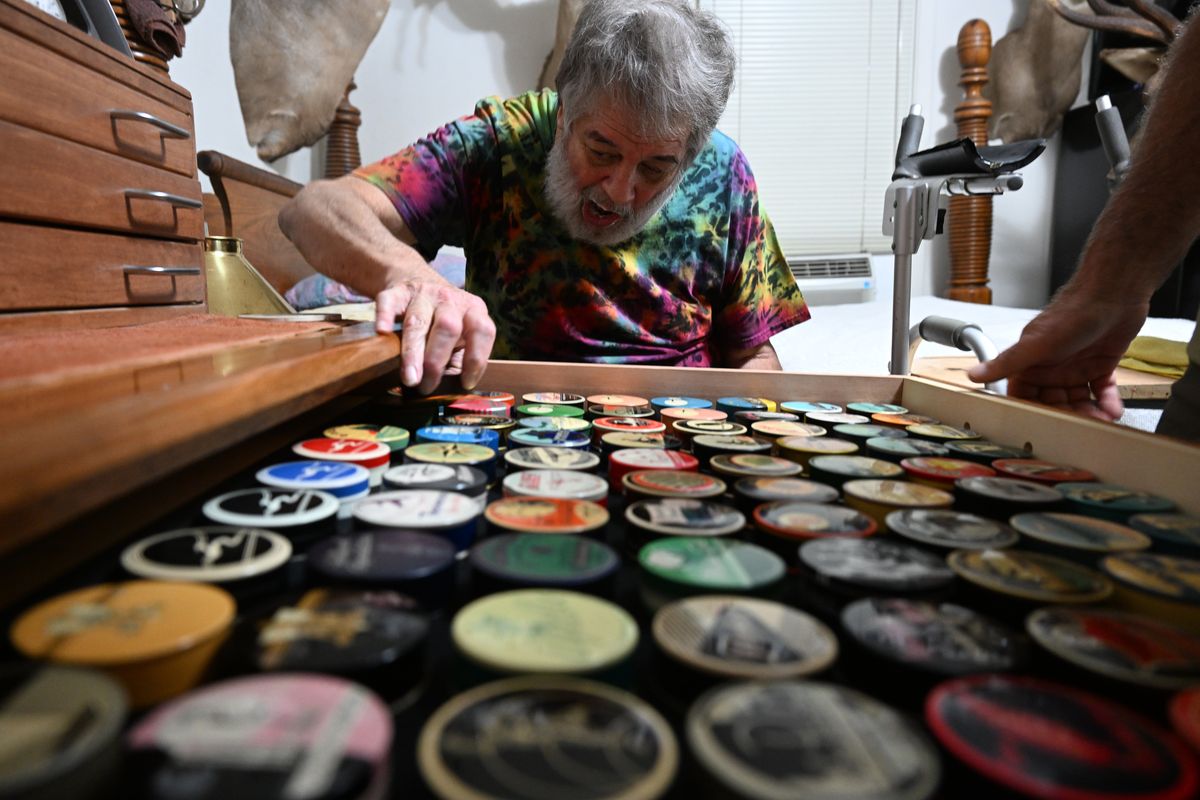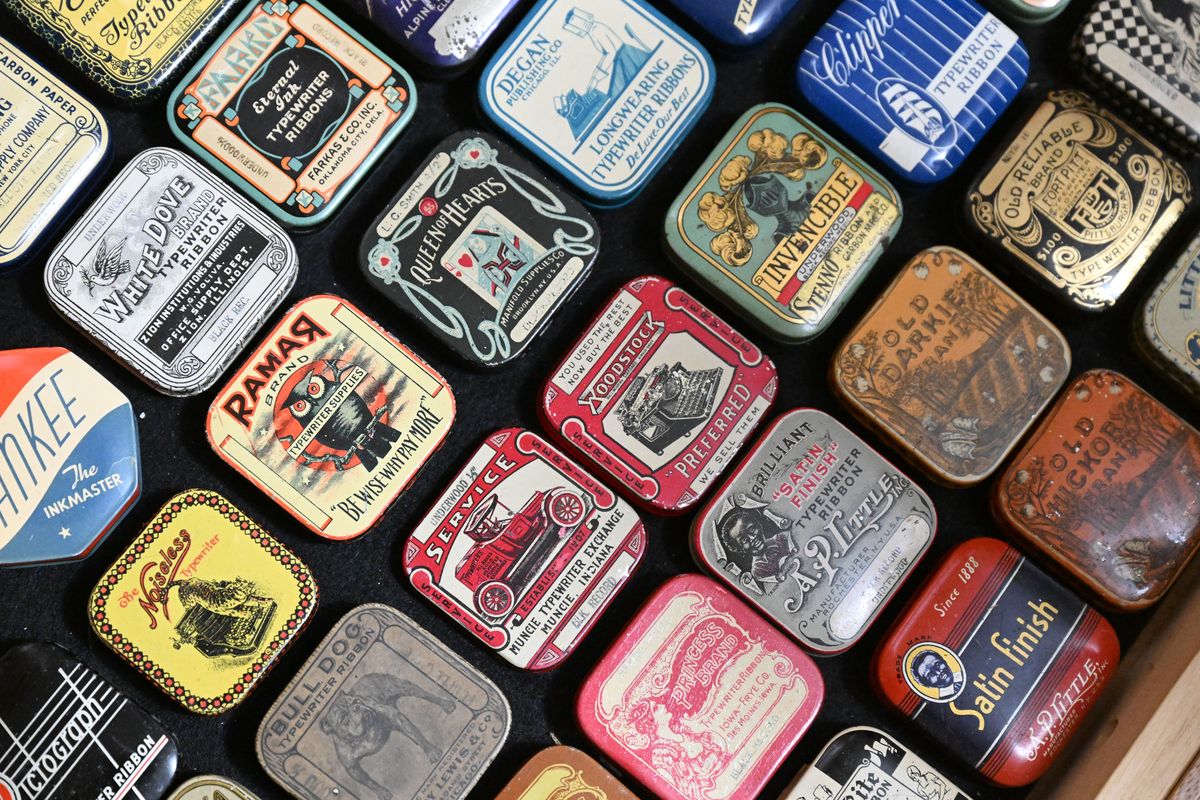The Collector: John Newbury’s typewriter ribbon tins went from being gift boxes for flies to an obsession in their own right

Long before the advent of word processors and personal computers, the invention of the typewriter revolutionized the work world.
The first machines came on the market in 1874 and featured ink ribbons that needed regular replacement. To keep the ribbons from drying out, they were packed in small tin cans.
Chewelah resident John Newbury owns the second most prestigious collection of those tins in North America.
“I’m a fly tyer,” he said. “I had a couple of ribbon tins and I wanted to find more to put flies in for Christmas gifts.”
He found more. A lot more. His collection now includes more than 1,550 tins.

And Newbury is more than just a “fly tyer.” In 2007, he became the first person inducted into the Washington State Fly Tying Hall of Fame.
In 2009, he was presented with the Buz Buszek Memorial Award, the highest honor a fly tyer can receive, for his significant contributions to the art of fly tying. That same year, he began collecting typewriter ribbon tins.
“A friend told me they were on eBay,” Newbury said. “I hadn’t been on eBay, but I saw cool tins I’d never seen before. I liked the graphics on them.”
Newbury’s teaching career had ended in the late 1980s when he was diagnosed with rapid onset dystonia, a symptom of Parkinson’s disease. The progressive neurological disease makes speech difficult and has made it impossible for him to fish or tie flies like he once did. However, it did not impede him from amassing a vast collection.
On eBay, he came across Hoby Van Deusen, a collector and curator of vintage typewriter ribbon tins.
“The guy who had the No. 1 collection in the world died, and Hoby had bought several hundred of his tins,” Newbury said. “He kept the ones he didn’t have in his collection and sold the rest on eBay.”
Newbury acquired many of those, and once the collecting bug had bitten, he often bought 200-300 at a time on the auction site.
“I’m rather eccentric and tend to be obsessive but not compulsive,” Newbury said. “But if 10 is good, 100 is better!”
For him, the delight is beating out other collectors on online auctions to acquire rare tins, like a red and yellow Service Woodstock Preferred tin from 1925-1929.
“There’s only eight in the world, and I have one!” he said.
Ribbon tins were in production (with a break during World War II to conserve metal) from the 1880s through the 1960s when they were replaced with cardboard and plastic packaging.
Newbury’s collection dates from the late 1800s through the 1920s and is displayed in a wooden flat file cabinet he purchased from Madison Art Supply. The drawers slide out to reveal his colorful treasures.
His earliest tins are blocky in shape because they held ribbons that were 1 ½ inches wide – the standard width before 1895 when Underwood introduced a typewriter fitted for a ½-inch ribbon.
Those “tall” tins include brands like Cotton King, Cameo and Bulldog. Western Carbon Ribbon advertised “Smutless Ribbons and Carbon Paper” on their container.
Another drawer features tins from 1916-ish to the late 1920s, and unlike earlier containers that were square, oblong, and even triangular, these tins are round.
“This is my favorite drawer,” said Newbury. “I like the round ones the best.”
He removed a red Navajo tin featuring an arrowhead with a woman weaving at a loom on it.
“This is the only one like it in the world, and I own it,” he said. “That makes it sweet.”
Also rare – a Husky ribbon tin from the University of Washington bookstore, one of five known to exist.
Newbury explained vintage containers like these are hard to come by because so many of them were scrapped for metal during World War II. Manufacturers used cardboard during the war years.
His favorites reflect his love of the outdoors and hunting. He pointed out two tins which feature a man toting a rifle, heading toward a forest accompanied by his dog.
Newbury grinned and said, “Look where the gun is pointing.”
Sure enough, the two tins he’d placed next to them featured birds.
However, this collector is no longer on the hunt for typewriter ribbon tins.
“I ran out of room,” he said. “And you can’t collect them all. There will always be some you don’t have.”